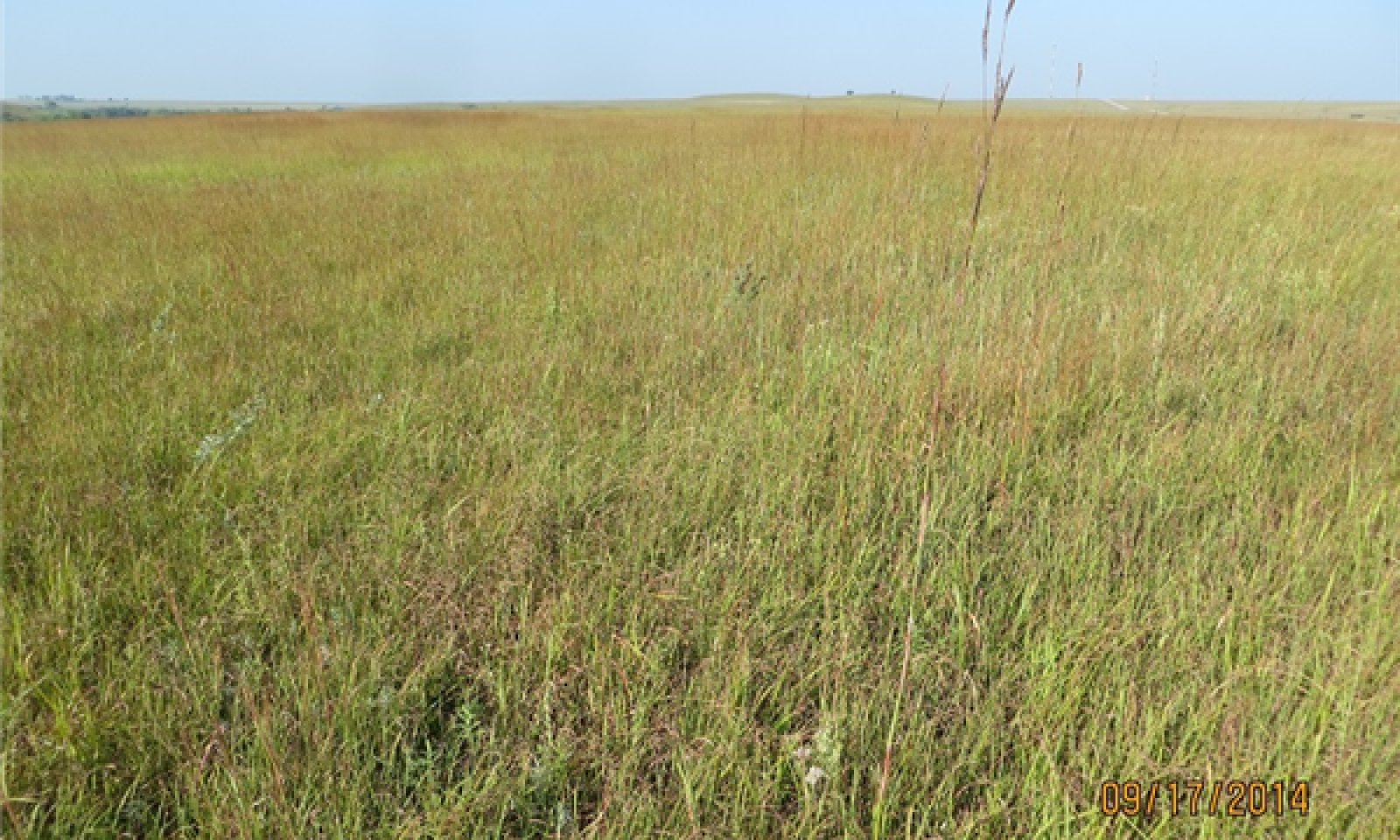

Natural Resources
Conservation Service
Ecological site HX076XY109
Gravelly Flint Hills
Last updated: 8/12/2019
Accessed: 12/20/2025
General information
Approved. An approved ecological site description has undergone quality control and quality assurance review. It contains a working state and transition model, enough information to identify the ecological site, and full documentation for all ecosystem states contained in the state and transition model.
MLRA notes
Major Land Resource Area (MLRA): 076X–Bluestem Hills
MLRA 76, is located in Kansas (84 percent) and Oklahoma (16 percent). It makes up about 7,555 square miles (19,585 square kilometers). The towns of Manhattan and El Dorado, Kansas, and Pawhuska, Oklahoma, are in this MLRA. The part of this area in Oklahoma lies between the towns of Ponca City and Bartlesville. Interstates 35 and 70 cross the part of the area in Kansas. The western edge of the Potawatomi Indian Reservation and the Fort Riley Military Base are in the part of the area in Kansas. Most of the Osage Indian Reservation in Oklahoma is in this area. The area is known as the “Flint Hills” in Kansas and the “Osage Hills” in Oklahoma.
Following are the various kinds of land use in this MLRA: Cropland— private, 18 percent; Grassland—private, 69 percent; Federal, 3 percent; Forest—private, 4 percent; Urban development—private, 3 percent; Water —private, 2 percent; Other —private, 1 percent.
Nearly all of this area is in farms or ranches. Nearly three fourths of the area supports native grasses grazed by beef cattle. Nearly one-fifth of the area is in cropland. These cropland areas are located on the deeper soils in valleys and on some of the uplands. The major crops grown include winter wheat, grain sorghum, alfalfa, and hay. These crops are also grown in small irrigated areas along the Arkansas River.
The major soil resource concerns are water erosion, surface compaction, moisture conservation, and maintenance of the content of organic matter in the soils. Maintenance of plant health and vigor and control of noxious and invading plants are the major management concerns on grassland. Conservation practices on cropland generally include terraces, grassed waterways, grade-control structures, conservation tillage, and nutrient and pest management. Conservation practices on rangeland generally include brush management, control of noxious weeds, nutrient management, prescribed burning, and prescribed grazing.
Classification relationships
Land Resource Region H. Central Great Plains winter wheat and range region. Major Land Resource Area (MLRA) 76 Bluestem Hills.
Ecological site concept
This ecological site was formerly known as Flint Ridge. Originally, Matfield was the only soil associated with this site. Matfield did not extend outside the boundaries of Chase county. The Gravelly Flint Hills ecological site will replace Flint Ridge, and will include the soil series Matfield and Florence. Florence was originally associated with the Loamy Upland ecological site. The basis for this decision was related to soil properties. Both soils have approximately 80 percent chert fragments in their profile. The plant production and community composition is similar on these two soils. An obvious difference between the two soils is slope.
Gravelly Flint Hills are located on nearly level to strongly sloping areas on interfluves and hillslopes (summits, shoulders, and backslopes) of uplands. Slope ranges from 0 to 15 percent. This site has soils that were formed in limestone residuum and have high amounts of chert fragments (35 to 90 percent) throughout the profile. Because of the high rock fragments in the subsoil this site has a very low to low available water capacity. As a result the total annual production is different when compared to associated sites.
Associated sites
| HX076XY115 |
Loamy Hills The Loamy Hills ecological site sits adjacent to and in conjunction with the Gravelly Flint Hills site. This site occurs on summit, shoulder positions, and footslopes (Tully soil). The Loamy Hills soils are well drained that formed from colluvium and in residuum from interbedded limestone and clayey shale. The Loamy Hills site has moderately deep to very deep soils with a silt loam to silty clay surface (7 to 14 inches). |
|---|
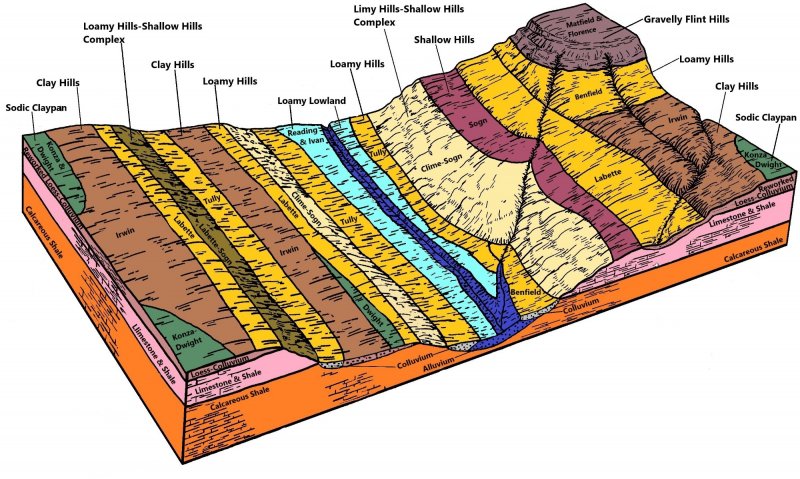
Figure 1. MLRA 76 ESD block diagram.
Table 1. Dominant plant species
| Tree |
Not specified |
|---|---|
| Shrub |
Not specified |
| Herbaceous |
(1) Andropogon gerardii |
Legacy ID
R076XY109KS
Physiographic features
Most of MLRA 76 is in the Osage Plains Section of the Central Lowland Province of the Interior Plains. The northern end of the area is in the Dissected Till Plains Section of the same province and division. The landscape consists of rolling hills and cuestas formed in dissected uplands that typically have narrow divides and narrow, steep-sided valleys where Pennsylvanian limestone bedrock is dominant. Stream valleys are less boxlike (broader) where the dominant bedrock is shale. Significant flood plains occur only along a few large streams. Elevation ranges from 980 to 1,650 feet (300 to 505 meters). Local relief is generally 10 to 25 feet (3 to 8 meters), but it can be 100 to 165 feet (30 to 50 meters).
The extent of the major Hydrologic Unit Areas (identified by four-digit numbers) that make up this MLRA is as follows: Neosho-Verdigris (1107),33 percent; Kansas (1027), 29 percent; Middle Arkansas (1103), 18 percent; Arkansas- Keystone (1106), 18 percent; and Republican (1025), 2 percent. The area has two large rivers. The Kansas River crosses the northern part of the area, and the Arkansas River runs along the southwestern edge. The smaller rivers that cross the area include the Vermillion, Mill, Neosho, Cottonwood, Fall, Verdigris, Grouse, Elk, Caney, and Bird Rivers.
The Gravelly Flint Hills ecological site is characteristic of soils that formed in residuum derived from limestone of Permian age. These soils are located on nearly level to strongly sloping areas on interfluves and hillslopes (summits, shoulders, and backslopes) of uplands. Slope ranges from 0 to 15 percent. Elevation ranges from 980 to 1,650 feet. This site is capable of generating runoff for other sites.
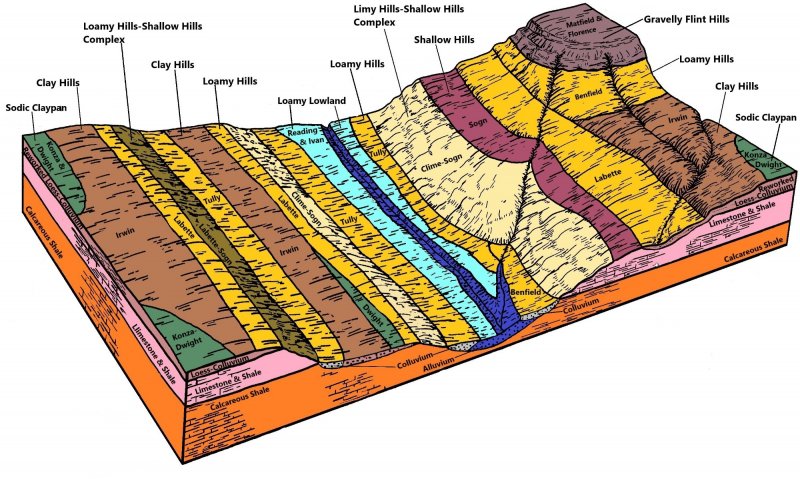
Figure 2. MLRA 76 ESD block diagram.
Table 2. Representative physiographic features
| Hillslope profile |
(1) Summit (2) Shoulder (3) Backslope |
|---|---|
| Landforms |
(1)
Hills
> Hillslope
(2) Interfluve |
| Runoff class | Negligible to medium |
| Flooding frequency | None |
| Ponding frequency | None |
| Elevation | 980 – 1,650 ft |
| Slope | 15% |
| Aspect | Aspect is not a significant factor |
Climatic features
The climate of this area is typically continental, being in the interior of a large landmass at mid latitudes. Large daily and annual variations in temperature are common. Winters are cold because of frequent polar air masses moving into the area from the north from December into March. Summer temperatures are warm and usually prevail for about six months of the year. June typically has the most rainfall, and January is the driest. Most of the rainfall occurs as high-intensity, convective thunderstorms. The annual snowfall averages 14 to 20 inches (355 to 510 millimeters). Drought occurs on an average of 3 times in a 30-year period (1981-2010) in MLRA 76.
The climate data listed in the following tables represent minimum and maximum averages and ranges for the climate stations located throughout MLRA 76. The dates referenced are from 1981-2010 (latest 30 year average). Average annual precipitation for this MLRA ranges from 32 to 40 inches (810 to 1020 millimeters). All weather data is supported by the National Oceanic and Atmospheric Administration (NOAA) 1981-2010 Climate Normals. For the average annual precipitation of individual climate station locations and additional climate data, access the National Water and Climate Center at http://www.wcc.nrcs.usda.gov
Table 3. Representative climatic features
| Frost-free period (characteristic range) | 144-162 days |
|---|---|
| Freeze-free period (characteristic range) | 177-192 days |
| Precipitation total (characteristic range) | 34-39 in |
| Frost-free period (actual range) | 140-171 days |
| Freeze-free period (actual range) | 167-194 days |
| Precipitation total (actual range) | 33-40 in |
| Frost-free period (average) | 154 days |
| Freeze-free period (average) | 185 days |
| Precipitation total (average) | 36 in |
Figure 3. Monthly precipitation range
Figure 4. Monthly minimum temperature range
Figure 5. Monthly maximum temperature range
Figure 6. Monthly average minimum and maximum temperature
Figure 7. Annual precipitation pattern
Figure 8. Annual average temperature pattern
Climate stations used
-
(1) TUTTLE CREEK LAKE [USC00148259], Manhattan, KS
-
(2) MANHATTAN [USC00144972], Manhattan, KS
-
(3) WAMEGO 4 W [USC00148563], Wamego, KS
-
(4) MANHATTAN MUNI AP [USW00003936], Manhattan, KS
-
(5) MANHATTAN 6 SSW [USW00053974], Manhattan, KS
-
(6) COUNCIL GROVE LAKE [USC00141867], Council Grove, KS
-
(7) TALLGRASS PRAIRIE NP [USC00148061], Strong City, KS
-
(8) COTTONWOOD FALLS [USC00141858], Cottonwood Falls, KS
-
(9) FLORENCE [USC00142773], Florence, KS
-
(10) CASSODAY 2SW [USC00141351], Cassoday, KS
-
(11) EL DORADO [USC00142401], El Dorado, KS
-
(12) EUREKA 1E [USC00142622], Eureka, KS
-
(13) SMILEYBERG 1N [USC00147534], Douglass, KS
-
(14) WINFIELD 3NE [USC00148964], Winfield, KS
-
(15) HOWARD 1W [USC00143822], Howard, KS
Influencing water features
The Gravelly Flint Hills ecological site is located on nearly level to strongly sloping uplands. Runoff form this site is low to medium. Water moves downslope and into drainageways. If inadequate vegetative cover is present, sheet erosion can occur and become excessive.
Soils on this ecological site have moderate to moderately slow permeability. Water holding capacity ranges from very low to low. The soils that are characteristic of the Gravelly Flint Hills are well-drained. Relative total annual plant production can be limited due to the water availability. The availability of water and nutrients is limited due to the amount of chert fragments in the soil profile.
The Matfield series is classified as a hydrologic soil group B. The Florence series is classified as a hydrologic soil group C. For more information on hydrologic groups refer to the NRCS National Engineering Handbook Part 630 chapter 7.
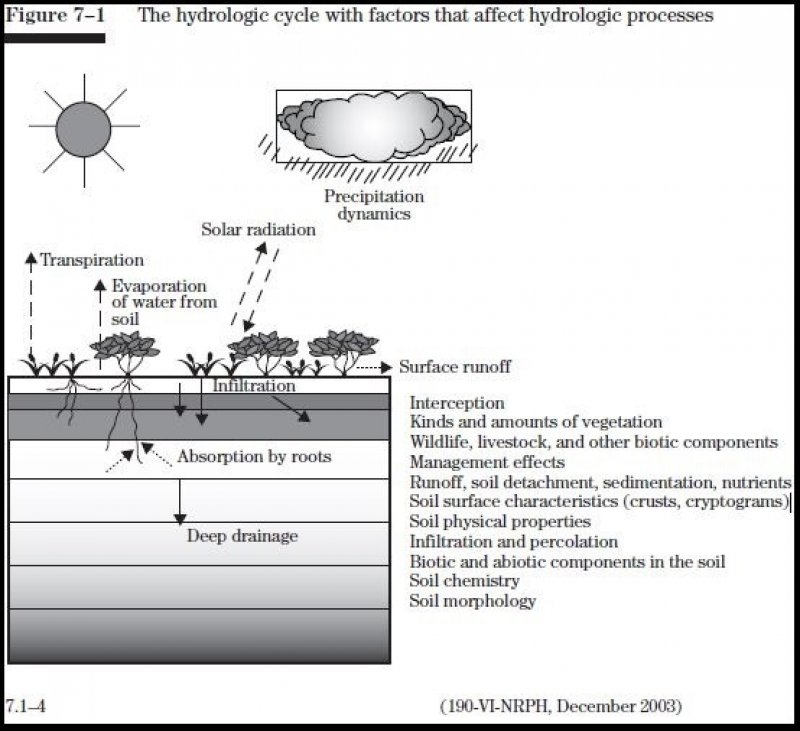
Figure 9. Fig. 7-1 from the National Range and Pasture Handbook.
Soil features
The soils that characterize the Gravelly Flint Hills ecological site consist of deep to very deep, well drained, moderate to moderately slow permeable soils on uplands. Slope will vary from nearly level on interfluves to strongly sloping on backslopes. Runoff is medium on a steep slope and low on the more gentle slope.
These soils formed in limestone residuum and have high amounts of chert fragments (35 to 90 percent) throughout the profile. They have gravelly to extremely gravelly silty surface layers that usually have good structure over very gravelly to extremely gravelly silty to clayey textures. They have very low to low available water capacity. In the subsoil, soil moisture is limited because of high rock fragment content.
The major soils that characterize this site are Florence and Matfield.
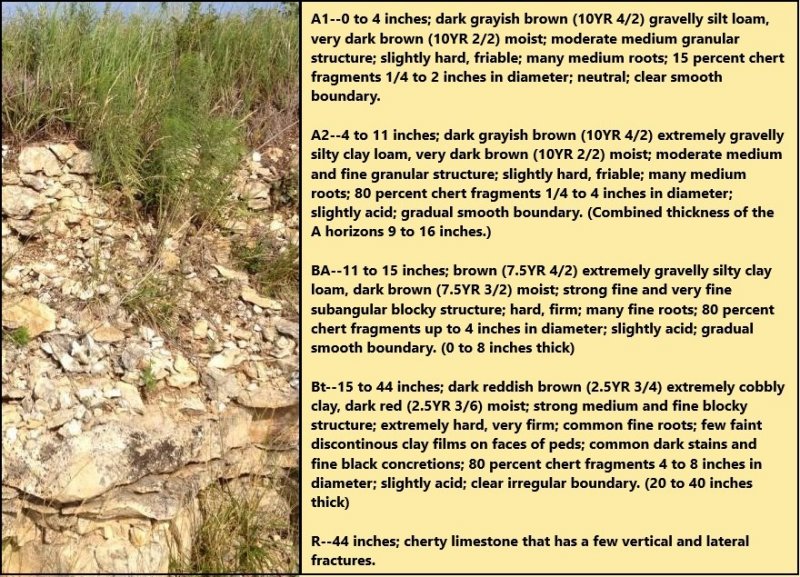
Figure 10. MLRA 76 Florence soil series and description.
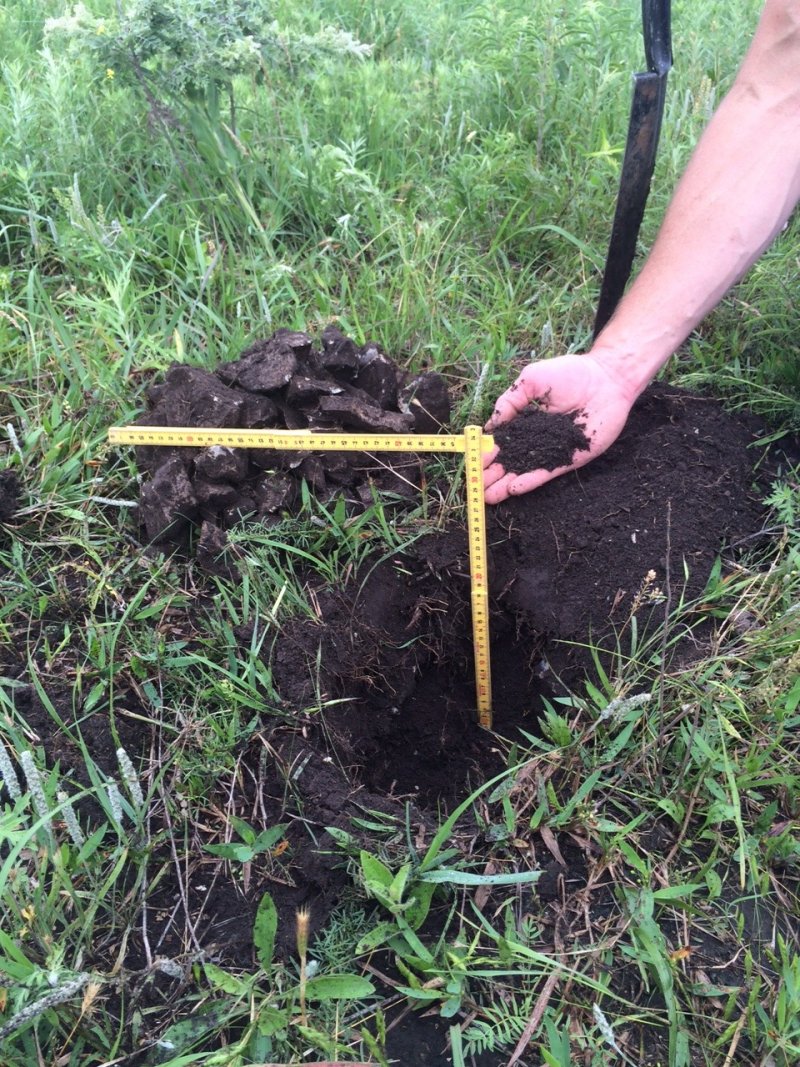
Figure 11. MLRA 76 Florence soil displaying 80% rock fragments.
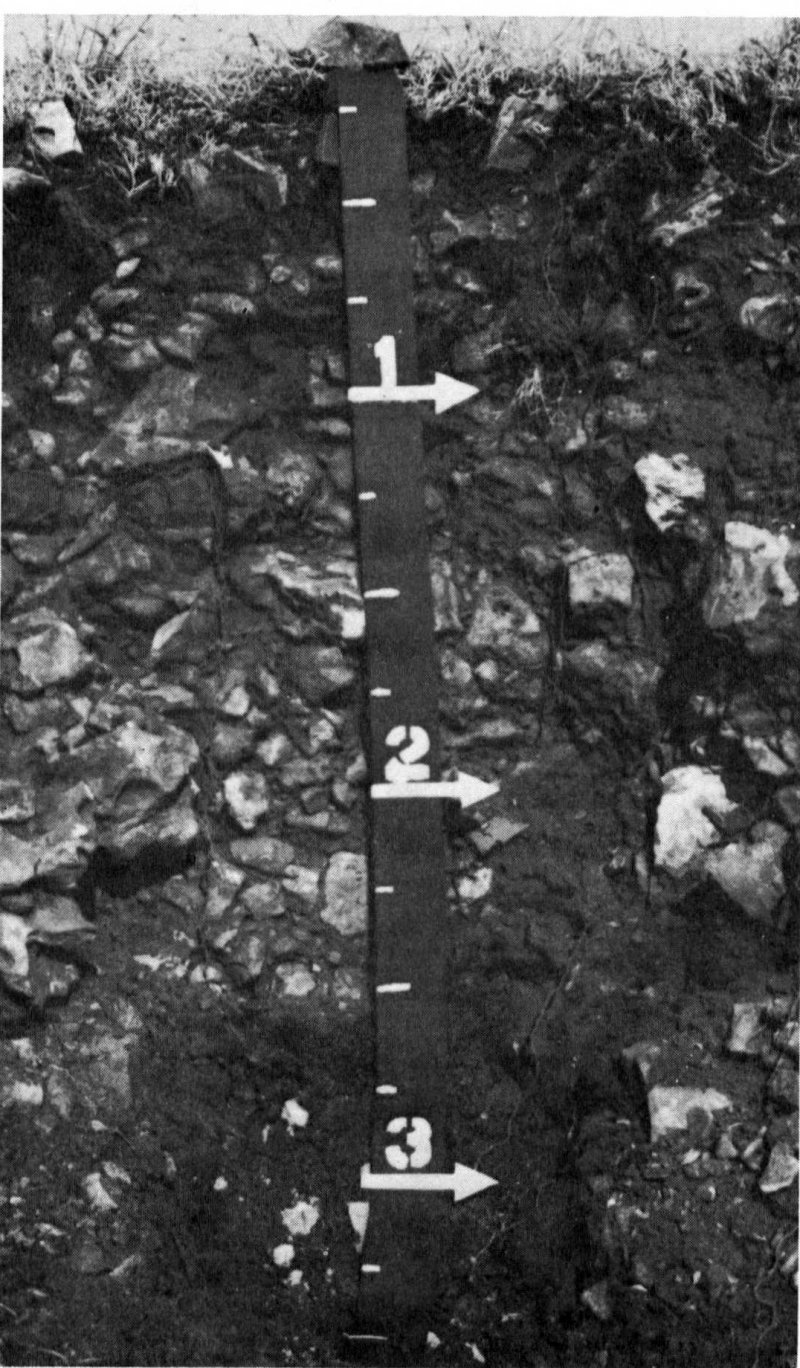
Figure 12. MLRA 76 Matfield soil series in Chase county Kansas.
Table 4. Representative soil features
| Parent material |
(1)
Residuum
–
limestone
|
|---|---|
| Surface texture |
(1) Gravelly silt loam (2) Extremely gravelly silt loam |
| Family particle size |
(1) Clayey-skeletal |
| Drainage class | Well drained |
| Permeability class | Moderate to moderately slow |
| Depth to restrictive layer | 40 in |
| Soil depth | 40 – 80 in |
| Surface fragment cover <=3" | 20% |
| Surface fragment cover >3" | 10% |
| Available water capacity (0-40in) |
0.8 – 4.5 in |
| Calcium carbonate equivalent (0-40in) |
Not specified |
| Electrical conductivity (0-40in) |
2 mmhos/cm |
| Sodium adsorption ratio (0-40in) |
Not specified |
| Soil reaction (1:1 water) (0-40in) |
5.6 – 7.8 |
| Subsurface fragment volume <=3" (Depth not specified) |
35 – 90% |
| Subsurface fragment volume >3" (Depth not specified) |
40% |
Ecological dynamics
The Gravelly Flint Hills ecological site in MLRA 76 consist of dynamic plant communities resulting from the complex interaction of many ecological factors and processes. The vegetation evolved on deep to moderately deep soils under a diverse, fluctuating climate. Plants were historically grazed by herds of large herbivores and periodically subjected to intense wildfires.
This site is interspersed with the Loamy Hills ecological site. This site is located along the major ridges in the Flint Hills. Florence and Matfield are the soils that characterize the Gravelly Flint Hills site. The relationship of the two cherty soils and their location within the broad landscape provide a unique setting for the tallgrass prairies.
The cherty silt loam surface soils over cherty clay subsoils characteristic of this site absorb water slowly. Water-holding capacities are low due to the high content of chert in the profile. The taller grasses that evolved and dominated the original plant community have root systems capable of utilizing moisture throughout most of the soil profile. Concentration of grass roots in the surface soil permits good oxygen and carbon dioxide exchange and efficient water uptake after precipitation events. Deeper roots that penetrate the cherty subsoil generally provide sufficient moisture to sustain limited plant growth during most dry periods. Runoff from this site is common once surface soils become saturated. The soil-plant moisture relationship is mutually exclusive and the site can be fairly productive except during periods of extended drought. Seed heads of the major grasses often reach five feet in height.
Grazing history has had a major impact on the dynamics of the site. The vegetative community developed under a grazing regime that consisted primarily of periodic grazing by large herds of bison. As the herds moved through an area, grazing was probably intense. When herds moved to adjacent areas, grazed vegetation was afforded an extended period of rest and recovery during the growing season. Other grazing and feeding animals such as elk, pronghorns, deer, rabbits, insects, and numerous burrowing rodents had secondary influences on plant community development.
The frequency and role that fires played in maintaining the plant community was reduced with the advent of roads, cultivated fields, and fire suppression techniques developed by European settlers. Use of prescribed fire as management tool has also diminished in some localities, especially surrounding population centers. In the absence of periodic, intense fire, there has often been a gradual increase in woody species. In some areas, shrubs and trees have encroached to the point of being the dominant influence in the plant community.
All of the dominant tallgrasses were rhizomatous which enabled them to survive very intense wildfires and gain a competitive advantage in the plant community. By contrast, most trees and shrubs were suppressed by fire and occurred only sparsely in protected areas. Growth of forbs, especially legumes, usually improved following a fire event. After a fire there was usually a substantial, but short-term, increase in the abundance of annual forbs as well.
Variations in climate, especially in drought cycles, also had a major impact upon the development of the plant community. Species composition fluctuated according to the duration and severity of droughts. During prolonged dry cycles, many of the shallow-rooted plants died out and the production of deeper-rooted plants significantly decreased. When sufficient rainfall occurred following an extended dry period, annual forbs and annual grasses would temporarily occur in great abundance. As precipitation returned to average or above average, the deeper-rooted grasses responded by yielding higher annual production.
As European settlers began utilizing the site for production of domestic livestock within fenced pastures in place of roaming bison herds, the ecological dynamics and physical aspects of this ecological site were altered and the plant community shifted from its original composition. These changes were usually in proportion to the season and intensity of use by livestock, and were accelerated by a combination of drought and inadequate rest and recovery periods. Because the taller grasses and forbs palatable to bison were similarly selected and consumed by cattle and horses, repeated grazing throughout each growing season weakened them. Over time, they were gradually replaced by the increase and spread of less palatable midgrasses and forbs. Where the history of overuse by domestic livestock was more intense, even the plants that initially increased were often replaced by even less desirable, lower-producing plants. In some areas plant cover was reduced to a mixture of perennial shortgrasses, annual grasses, and forbs.
The rolling topography characteristic of this ecological site was attractive to European immigrants, who settled in the area. Few, if any, areas of this site were brought under cultivation for the production of crops due to the abundance of chert near the soil surface. Nearly all areas have been used for grazing, although native hay production has been practiced in some locations.
The following diagram illustrates some of the pathways that the vegetation on this site may take from the Reference Plant Community as influencing ecological factors change. There may be other states or plant communities not shown on the diagram, as well as noticeable variations within those illustrated.
State and transition model
More interactive model formats are also available.
View Interactive Models
Click on state and transition labels to scroll to the respective text
Ecosystem states
State 1 submodel, plant communities
| 1.1 to 1.2 | - | Heavy, continuous grazing without adequate rest and recovery |
|---|---|---|
| 1.2 to 1.1 | - | Prescribed grazing that incorporates periods of deferment during the growing season |
| 1.2 to 1.3 | - | Long-term (>20 years) continuous grazing with no rest and no recovery |
| 1.3 to 1.2 | - | Prescribed grazing with adequate rest and recovery period during the growing season |
State 1
Grassland State
The Grassland State defines the ecological potential and natural range of variability resulting from the natural disturbance regime of the Gravelly Flint Hills ecological site. This state is supported by empirical data, historical data, local expertise, and photographs. It is defined by a suite of native plant communities that are a result of periodic fire, drought, and grazing by bison. These events are part of the natural disturbance regime and climatic process. The soil dynamic properties that can influence community phase and state changes are organic matter content, biological activity, aggregate stability, infiltration, soil fertility, and soil reaction. Other grazing and feeding animals such as elk, pronghorns, deer, rabbits, insects, and numerous burrowing rodents had secondary influences on plant community development. Today, cattle are the primary grazers on this ecological site. Within the grassland state, the woody vegetation will generally be less than 15 percent canopy cover per acre. If introduced, invasive or noxious plants are present, they should not exceed 15 percent of the total pounds of vegetation produced per acre in order to avoid crossing a threshold. The Grassland State has three community phases that interact with the environment to produce a warm-season tallgrass dominant plant community. The soil dynamic properties that can influence community phase and state changes are organic matter content, biological activity, aggregate stability, infiltration, soil fertility, and soil reaction. Bison were the primary historic animal community with influence on the development of this state. Other grazing and feeding animals such as elk, pronghorns, deer, rabbits, and insects had secondary influences on plant community development. Today, cattle are the primary grazers on this ecological site. Within the grassland state, the woody vegetation will generally be less than 5 percent canopy cover per acre. If introduced, invasive or noxious plants are present, they should not exceed 15 percent of the total pounds of vegetation produced per acre in order to avoid crossing a threshold. More field investigations are needed in order to determine if there is an introduced, invasive, or noxious state within this site. Plant communities within this state function similarly in their capacity to limit soil loss, cycle water, and produce vegetative biomass. The plant community phases can vary through changes in grazing management or fluctuating climatic conditions. The variables that control the resilience of this grassland state are long-term grazing management and frequency of fire.
Characteristics and indicators. Tallgrasses and Midgrasses are dominant in the Grassland State.
Resilience management. Management strategies that will sustain this state include monitoring key forage species and providing a forage and animal balance.
Community 1.1
Reference Plant Community

Figure 13. MLRA 76 Reference Plant Community.
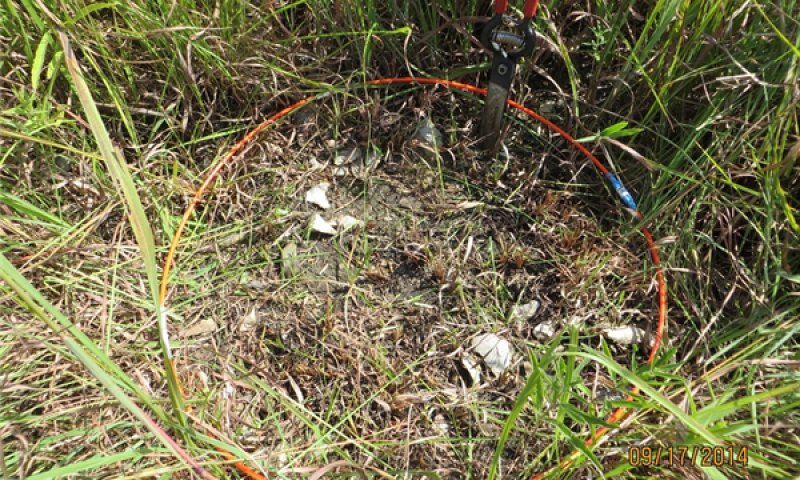
Figure 14. Chert fragments on the surface.
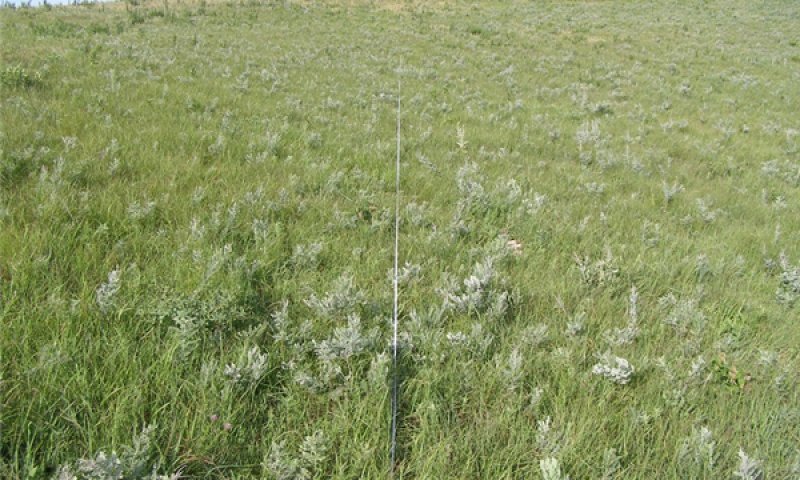
Figure 15. MLRA 76 Reference Plant Community.
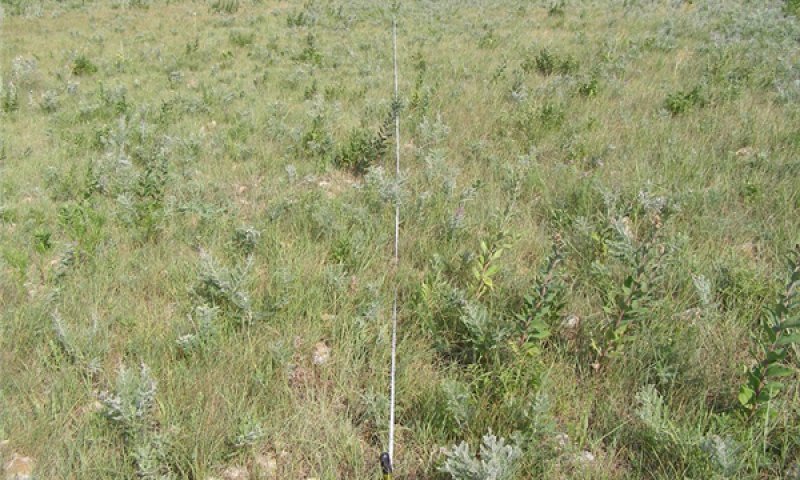
Figure 16. MLRA 76 Reference Plant Community with visible chert fragments.
The interpretive plant community for the Gravelly Flint Hills ecological site is the Reference Plant Community, and represents the original plant community that existed prior to European settlement. This site is characterized as a grassland essentially free of trees and large shrubs, it is dominated by tall, warm-season grasses including big bluestem, switchgrass, and Indiangrass. The major midgrass is little bluestem. These grasses will account for 70 to 80 percent of vegetation produced annually. Eastern gamagrass and prairie cordgrass sometimes occur where soils are moist, due to underground seepage or run-in from adjacent slopes. Other prevalent grasses are purpletop tridens, sideoats grama, composite dropseed. Native short grasses such as buffalograss and blue grama are minor components of this community. The plant production data from the Reference Community phase is based on 1968 range condition guides and technical range site descriptions for Kansas and Oklahoma, 1982 range site descriptions, 2006 draft ecological site information, and from professionals who have experience working in MLRA 76. The site supports a wide variety of native legumes and forbs interspersed throughout the plant community. The most abundant legumes are Nuttall’s sensitive-briar, slimflower scurfpea, violet prairie clover, roundhead lespedeza, slender lespedeza, and prairie bundleflower. Other prominent forbs include compassplant, wholeleaf rosinweed, Maximilian sunflower, stiff sunflower, pitcher sage, pale purple Echinacea, and upright prairie coneflower. Leadplant and Jersey tea are low-growing, fire tolerant shrubs that occur throughout the site. A few small clumps of smooth sumac may be found in areas where they partially escape the effects of intense fires. Total woody plant cover comprises from one to five percent of the total vegetative cover on regularly burned bluestem prairie (Anderson and Fly, 1955). Wet winter precipitation patterns can influence this site to have an early spring influx of species to include numerous cool-season grasses, grass-like plants, and forbs. Major grasses and grasslike plants are Canada wildrye, Virginia wildrye, prairie Junegrass, porcupinegrass, western wheatgrass, sedges, and rushes. Early-emerging forbs that may flower as early as March or April may include Carolina anemone, prairie blue-eyed grass, diamond flowers, prairie pleatleaf, Carolina larkspur, Carolina geranium, Nuttall’s prairie parsley, common goldstar, and Virginia springbeauty. This is a stable plant community when grazing and fires are adequately managed. A prescribed grazing program that incorporates periods of grazing rest and recovery during the growing season benefits the dominant tall- and midgrasses as well as the more palatable forb species. This is a dynamic plant community, and repetitive management decisions will have an impact on the diversity of species and site productivity. Excessive grazing and livestock trailing can quickly impact soil stability. Because this site often occurs on ridge tops and other high elevations on the landscape, it is preferred by grazing animals during the days of summer. Cattle and other livestock commonly graze into the prevailing southerly winds and find loafing areas in this site to gain relief from heat and insects. Concentrated livestock use without adequate rest during the growing season can cause compaction of the wet, clay soils and stress the dominant grasses. Prescribed fire 2 out of 5 years is necessary to maintain the Reference Community.
Resilience management. This is a stable plant community when grazing and fire are adequately managed. A prescribed grazing program that incorporates periods of grazing rest and recovery of key forage species during the growing season benefits the tallgrasses and even the more palatable forb species. Early management programs involving transient steers shipped into the area were effective in maintaining a plant composition closely resembling the reference plant community. Pastures were burned in the spring and grazed from green-up until mid to late July when steers were transported to market. The vegetation was then rested the remainder of the growing season permitting full recovery of most plants.
Dominant plant species
-
big bluestem (Andropogon gerardii), grass
-
little bluestem (Schizachyrium scoparium), grass
-
sideoats grama (Bouteloua curtipendula), grass
-
Indiangrass (Sorghastrum nutans), grass
-
switchgrass (Panicum virgatum), grass
Figure 17. Annual production by plant type (representative values) or group (midpoint values)
Table 5. Annual production by plant type
| Plant type | Low (lb/acre) |
Representative value (lb/acre) |
High (lb/acre) |
|---|---|---|---|
| Grass/Grasslike | 1275 | 2550 | 3400 |
| Forb | 150 | 300 | 400 |
| Shrub/Vine | 75 | 150 | 200 |
| Total | 1500 | 3000 | 4000 |
Figure 18. Plant community growth curve (percent production by month). KS7609, Gravelly Flint Hills. Active growth of warm-season grasses on this site typically begins during the period of May 1 to May 15 and continues until mid-September. As a general rule, 75 percent of total production is completed by mid-July. This varies only slightly from year to year depending on temperature and precipitation patterns. There are exceptions as big bluestem and eastern gamagrass will occasionally initiate spring growth in early April following mild winter temperatures. Also, it is not unusual for other warm-season grasses such as Indiangrass and little bluestem to have some new leaf growth arising from basal buds in late October following moderate fall temperatures. Cool-season grasses and sedges generally have two primary growth periods, one in the spring (March through early June) and again in the fall (September and October). Some growth may occur in winter months during periods of unseasonably mild temperatures..
| Jan | Feb | Mar | Apr | May | Jun | Jul | Aug | Sep | Oct | Nov | Dec |
|---|---|---|---|---|---|---|---|---|---|---|---|
| J | F | M | A | M | J | J | A | S | O | N | D |
| 0 | 1 | 3 | 7 | 27 | 33 | 14 | 7 | 5 | 2 | 1 | 0 |
Community 1.2
Midgrass/Tallgrass Community
The composition of this plant community is dominated by a mixture of tallgrasses and midgrasses. Tallgrasses such as big bluestem, Indiangrass, and switchgrass still comprise the majority of this community even though production may be reduced by heavy grazing. Summer growing forbs such as Maximilian sunflower, stiff sunflower, compassplant, Nuttal’s sensitive-briar, prairie bundleflower, and wholeleaf rosinweed have decreased noticeably and have mostly been replaced by white sagebrush, white heath aster, Drummond’s aster, Cuman ragweed, and Missouri goldenrod. Forbs typically comprise only about ten percent of the biomass in annually burned prairie, and plant diversity is lower in these sites than in those burned less frequently (Knapp and others 1998c). This site supports a few shrubs. Leadplant and Jersey tea may be scattered throughout the site. Smooth sumac, flameleaf sumac, and roughleaf dogwood are often found in small single-species clumps or mottes. Shrubs will usually comprise less than 5 percent of total production.
Resilience management. Periods of rest and recovery from grazing are essential in maintaining the production of some of the major grasses found in this plant community. Big bluestem is especially preferred and selectively grazed by cattle. When the site is grazed continuously throughout the growing season, it is usually overgrazed and thus maintained in a lower state of plant vigor. When continued for many years, overgrazing results in a gradual reduction of all the tallgrasses. However, prescribed grazing that incorporates periods of rest and recovery during the growing season will improve the vigor and eventually the recovery of the palatable tallgrasses and forbs.
Dominant plant species
-
little bluestem (Schizachyrium scoparium), grass
-
sideoats grama (Bouteloua curtipendula), grass
-
composite dropseed (Sporobolus compositus var. compositus), grass
-
big bluestem (Andropogon gerardii), grass
-
blue grama (Bouteloua gracilis), grass
Community 1.3
Midgrass/Shortgrass Community
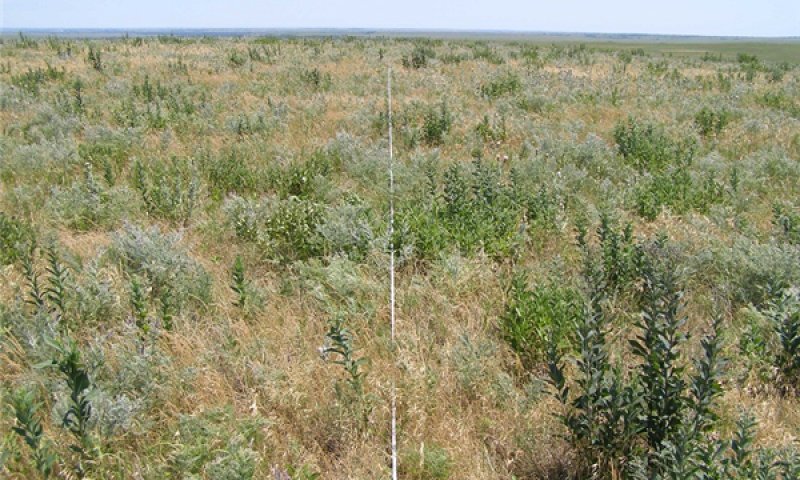
Figure 19. MLRA 76 Matfield soil series located on a ridgetop.

Figure 20. Landscape image of Matfield soil series located on ridgetop.
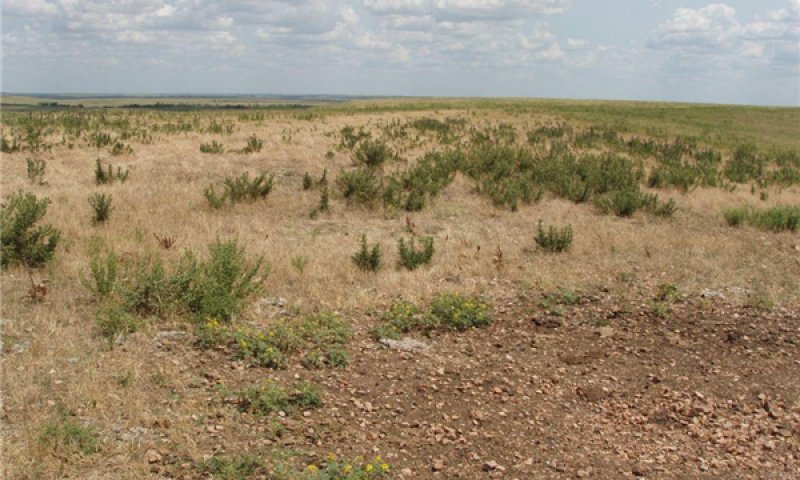
Figure 21. MLRA 76 Matfield soil series on a summit.
This plant community results from many years of overgrazing. The amount of tallgrasses and the more palatable midgrasses have decreased significantly and the site is dominated by shortgrasses and less desirable midgrasses. Major midgrasses are composite dropseed, sand dropseed, silver beardgrass, purpletop tridens, vine mesquite, sideoats grama, winter bentgrass, and marsh bristlegrass. Major shortgrasses include Kentucky bluegrass, Carolina crabgrass, thin paspalum, Scribner’s rosette grass, buffalograss, tumble windmill grass, blue grama, hairy grama, and prairie threeawn. Cool-season annual grasses such as cheatgrass, field brome, little barley, and sixweeks fescue are usually prevalent in fall and spring months when precipitation patterns are favorable. This community is vulnerable to degradation. Relative to the Reference Community, there has been a reduction in the more palatable tallgrasses and forbs. This phase is exceeding the resilience limits of the state. Changes in management are necessary to avoid crossing a threshold. At this time, there are no other known states. Prescribed fire is non-existent or at frequencies greater than 9 years. Grazing at times is more intense and frequent than what the dynamics of the grassland state prescribes. There is no forage and animal balance. This community phase will include many kinds of plant communities. Soil dynamic property changes include biological activity, infiltration, and soil fertility.
Resilience management. Recovery of the tallgrasses, midgrasses, and associated forbs characteristic of the Reference Plant Community will require many years of careful management that includes prescribed grazing and extended periods of rest and recovery during the growing season. If remnant stands of the desired species are not present or located nearby as seed sources for reestablishment, interseeding measures may be needed to create pioneer colonies for seed dispersal throughout the community. Prescribed burning can be a useful tool if used strategically to benefit the desired species, especially in the later stages of the recovery process that may take more than a decade.
Dominant plant species
-
sideoats grama (Bouteloua curtipendula), grass
-
blue grama (Bouteloua gracilis), grass
-
composite dropseed (Sporobolus compositus var. compositus), grass
Pathway 1.1 to 1.2
Community 1.1 to 1.2
These mechanisms include management controlled by repetitive heavy use, no rest or recovery of the key forage species and no forage and animal balance for many extended grazing seasons. This type of management lasting for periods greater than 10 years will shift functional and structural plant group dominance towards a midgrass plant community. Annual burning or a fire frequency occurrence <2 years will cause a shift in community phases. The frequency of late spring annual burning in combination with late season rest may result in a shift in species diversity as well as fluctuations in productivity. Herbicide use every 1-3 years will remove legumes and forbs and become a grass dominated community. Drought conditions that persist >3 years with below average rainfall during the first half of the growing season in addition to inadequate rest provided for plant recovery will result in productivity changes.
Context dependence. Plant community composition shifts from Tallgrass to Midgrass dominant.
Pathway 1.2 to 1.1
Community 1.2 to 1.1
Causes of plant community shift include management (10-15 years) with adequate rest and recovery of the key forage species (big bluestem, switchgrass, Indiangrass, and little bluestem) within the Reference Plant Community . If woody species are present, prescription fires every 6-8 years will be necessary for their removal and/or maintenance.
Conservation practices
| Prescribed Burning | |
|---|---|
| Prescribed Grazing |
Pathway 1.2 to 1.3
Community 1.2 to 1.3
These mechanisms include management controlled by repetitive heavy use, no rest or recovery of the key forage species and no forage and animal balance for many extended grazing seasons. This type of management lasting for periods greater than 20 years will shift functional and structural plant group dominance towards a Midgrass/Shortgrass Plant Community.
Pathway 1.3 to 1.2
Community 1.3 to 1.2
Causes of plant community shift include management (10-15 years) with adequate rest and recovery of the key forage species (little bluestem, sideoats grama, big bluestem, switchgrass, and Indiangrass) within the Midgrass/Tallgrass Plant Community . If woody species are present, prescription fires every 6-8 years will be necessary for their removal and/or maintenance. Recovery of the tall grasses, mid-grasses and associated forbs characteristic of the Reference Plant Community or something very similar will require many years of careful management that includes prescribed grazing and extended periods of rest during the growing season. Remnant stands of the desired species should be present or located nearby as seed sources for reestablishment. Inter-seeding measures may be needed to create pioneer colonies for seed dispersal throughout the community. Prescribed fire (every 2-3 years) can be a useful tool if used strategically to benefit the desired species, especially in the later stages of the recovery process, which may take more than a decade. Herbicide control measures may maintain certain species such as sericea lespedeza, fescue, brome, and bluegrass, but not necessarily eradicate them. This is species specific and if herbicides are used, care should be taken to ensure all application and rates are completed according to label recommendations. Herbicide use could also have adverse effects to the native forbs and legumes.
Conservation practices
| Prescribed Burning | |
|---|---|
| Prescribed Grazing |
Additional community tables
Table 6. Community 1.1 plant community composition
| Group | Common name | Symbol | Scientific name | Annual production (lb/acre) | Foliar cover (%) | |
|---|---|---|---|---|---|---|
|
Grass/Grasslike
|
||||||
| 1 | Tallgrasses | 500–1000 | ||||
| big bluestem | ANGE | Andropogon gerardii | 500–1000 | – | ||
| Indiangrass | SONU2 | Sorghastrum nutans | 50–150 | – | ||
| switchgrass | PAVI2 | Panicum virgatum | 25–125 | – | ||
| composite dropseed | SPCO16 | Sporobolus compositus | 0–50 | – | ||
| 2 | Midgrasses | 400–990 | ||||
| little bluestem | SCSC | Schizachyrium scoparium | 300–800 | – | ||
| sideoats grama | BOCU | Bouteloua curtipendula | 100–350 | – | ||
| 3 | Shortgrasses | 50–200 | ||||
| blue grama | BOGR2 | Bouteloua gracilis | 25–100 | – | ||
| buffalograss | BODA2 | Bouteloua dactyloides | 25–100 | – | ||
| 4 | Cool-season grasses | 75–200 | ||||
| sedge | CAREX | Carex | 15–40 | – | ||
| Scribner's rosette grass | DIOLS | Dichanthelium oligosanthes var. scribnerianum | 15–40 | – | ||
| Canada wildrye | ELCA4 | Elymus canadensis | 15–40 | – | ||
| Virginia wildrye | ELVI3 | Elymus virginicus | 15–40 | – | ||
| prairie Junegrass | KOMA | Koeleria macrantha | 15–40 | – | ||
|
Forb
|
||||||
| 5 | Forbs | 150–300 | ||||
| catclaw mimosa | MIAC3 | Mimosa aculeaticarpa | 15–50 | – | ||
| white prairie clover | DACA7 | Dalea candida | 5–40 | – | ||
| slimflower scurfpea | PSTE5 | Psoralidium tenuiflorum | 10–40 | – | ||
| white heath aster | SYER | Symphyotrichum ericoides | 5–40 | – | ||
| aromatic aster | SYOB | Symphyotrichum oblongifolium | 10–30 | – | ||
| upright prairie coneflower | RACO3 | Ratibida columnifera | 10–30 | – | ||
| dotted blazing star | LIPU | Liatris punctata | 10–30 | – | ||
| purple prairie clover | DAPU5 | Dalea purpurea | 10–30 | – | ||
| blacksamson echinacea | ECAN2 | Echinacea angustifolia | 10–30 | – | ||
| blue wild indigo | BAAU | Baptisia australis | 0–30 | – | ||
| Cuman ragweed | AMPS | Ambrosia psilostachya | 10–30 | – | ||
| white sagebrush | ARLU | Artemisia ludoviciana | 0–30 | – | ||
| groundplum milkvetch | ASCR2 | Astragalus crassicarpus | 5–20 | – | ||
| stiff sunflower | HEPA19 | Helianthus pauciflorus | 0–20 | – | ||
| stiff goldenrod | OLRI | Oligoneuron rigidum | 0–20 | – | ||
| Missouri goldenrod | SOMI2 | Solidago missouriensis | 0–20 | – | ||
| wild indigo | BAPTI | Baptisia | 0–10 | – | ||
| yellow sundrops | CASE12 | Calylophus serrulatus | 0–10 | – | ||
| evening primrose | OENOT | Oenothera | 0–10 | – | ||
| field pussytoes | ANNE | Antennaria neglecta | 0–10 | – | ||
| common yarrow | ACMI2 | Achillea millefolium | 0–10 | – | ||
|
Shrub/Vine
|
||||||
| 6 | Shrubs | 50–150 | ||||
| New Jersey tea | CEAM | Ceanothus americanus | 15–60 | – | ||
| leadplant | AMCA6 | Amorpha canescens | 15–60 | – | ||
| prairie rose | ROAR3 | Rosa arkansana | 10–40 | – | ||
Interpretations
Animal community
Grazing by domestic livestock is the major income-producing industry in the Flint Hills. There are approximately 1,000,000 beef cattle supported by the tallgrass of the Flint Hills each year. Rangeland in this area may provide year-long forage for cattle or horses. Much of this site is used for summer grazing of livestock.
Because of the great variety of forbs and grasses found on this ecological site, it provides excellent habitat for ground nesting birds including both the eastern and western meadowlark as well as the upland sandpiper. The greater prairie chicken often uses this site for booming grounds or “leks” where the males carry out their courtship displays, a unique “flint hills” spring ritual.
The rocky, open areas of the site are also preferred by lizards and snakes which sometimes take advantage of the warmth from solar radiation and feed on insects. Two popular species of lizards in Kansas are found on this site. The collared lizard and the Texas horned lizard can commonly be seen foraging in this rocky terrain. Many songbirds, small rodents, and other small mammals frequently feed here as well.
Some animals are important because of their threatened and endangered status and require special consideration. Please check the Kansas Department of Wildlife and Parks and Tourism (KDWP&T) website at www.ksoutdoors.com for the most current listing for your county.
Grazing Interpretations
Calculating Safe Stocking Rates: Proper stocking rates should be incorporated into a grazing management strategy that protects the resource, maintains or improves rangeland health, and is consistent with management objectives. In addition to usable forage, safe stocking rates should consider ecological condition, trend of the site, past grazing use history, season of use, stock density, kind and class of livestock, forage digestibility, forage nutritional value, variation of harvest efficiency based on preference of plant species, and/or grazing system, and site grazeability factors (such as steep slopes, site inaccessibility, or distance to drinking water).
Often the current plant community does not entirely match any particular Community Phase as described in this Ecological Site Description. Because of this, a resource inventory is necessary to document plant composition and production. Proper interpretation of inventory data will permit the establishment of a safe initial stocking rate.
No two years have exactly the same weather conditions. For this reason, year-to-year and season-to-season fluctuations in forage production are to be expected on grazing lands. Livestock producers must make timely adjustments in the numbers of animals or in the length of grazing periods to avoid overuse of forage plants when production is unfavorable, and to make advantageous adjustments when forage supplies are above average.
Initial stocking rates should be improved through the use of vegetation monitoring and actual use records that include number and type of livestock, the timing and duration of grazing, and utilization levels. Actual use records over time will assist in making stocking rate adjustments based on the variability factors. Average annual production must be measured or estimated to properly assess useable forage production and stocking rates.
Hydrological functions
Following are the estimated withdrawals of freshwater by use in MLRA 76: Public supply—surface water, 12.9%; ground water, 10.2% Livestock— surface water, 15.8%; ground water, 4.5% Irrigation—surface water, 53.9%; ground water, 2.7% Other—surface water, 0.0%; ground water, 0.0%
The total withdrawals average 35 million gallons per day (130 million liters per day). About 17 percent is from ground water sources, and 83 percent is from surface water sources. The moderate precipitation provides water for pastures and crops. Much of the water for livestock is stored in small reservoirs and ponds. A small area is irrigated with water from the Arkansas River in Oklahoma. The surface water is generally of good quality and is suitable for most uses.
Matfield is a hydrologic group B soils and Florence is a hydrologic group C. Water intake and runoff is moderate. Refer to the NRCS National Engineering Handbook Section 4 (NEH-4) for runoff quantities and hydrologic curves when making hydrology determinations.
Recreational uses
This site provides opportunities for a variety of outdoor activities which might include bird watching, hiking, outdoor/wildlife photography, and hunting. A wide variety of plants blooms throughout the growing season, especially in those years with average and above-average rainfall. The diversity of wildflowers and numerous panoramic vistas provide much aesthetic appeal to the landscape. This site is sensitive to foot and vehicle traffic, which can accelerate sheet erosion.
Wood products
This site normally produces no wood products.
Other products
None
Other information
Site Development and Testing Plan
This site went through the approval process.
The Major Land Resource Area (MLRA) 76 Bluestem Hills, often referred to as the Flint Hills, is named for the abundant flint (chert) eroded from the bedrock that lies near or at the surface. This area supports tall prairie grasses. Big bluestem, Indiangrass, switchgrass, and little bluestem are the dominant species. The Flint Hills is designated as a distinct region because it has the most dense coverage of intact tallgrass prairie in North America. Very little of this area has been cultivated because of the abundance of cherty limestone near and on the surface. It is a focal area for the preservation of this ecosystem. Some of the major wildlife species in this area are whitetailed deer, coyote, fox, badger, beaver, raccoon, skunk, civet, opossum, muskrat, mink, great blue heron, prairie chicken, and bobwhite quail. The species of fish in the area include bass, walleye, catfish, bullhead, and carp.
Supporting information
Inventory data references
Information presented here has been derived from NRCS clipping data, numerous ocular estimates and other inventory data. Field observations from experienced range-trained personnel was used extensively to develop this ecological site description.
NRCS contracted the development of MLRA 79 ESDs in 2005. Extensive review and improvements were made to those foundational ESDs in 2017-2018 which provided an approved product.
Range Condition Guides and Technical Range Site Descriptions for Kansas, Flint Ridge, USDA, Soil Conservation Service, March, 1967.
Range Site Description for Kansas, Flint Ridge, USDA-Soil Conservation Service, September, 1985.
Ecological Site Description for Kansas, Flint Ridge (R076XY009KS) located in Ecological Site Information System (ESIS), 2007
References
-
Bestelmeyer, B., J.R. Brown, K.M. Havstad, B. Alexander, G. Chavez, and J.E. Herrick. 2003. Development and Use of State and Transition Models for Rangelands. Jornal of Range Management 56:114–126.
-
Bestelmeyer, B. and J.R. Brown. 2005. State-and-Transition Models 101: a Fresh Look at Vegetation Change.
-
Bestelmeyer, B.T., K. Moseley, P.L. Shaver, H. Sanchez, D.D. Briske, and M.E. Fernandez-Gimenez. 2010. Practical guidance for developing state-and-transition models. Rangelands 32:23–30.
-
Bestelmeyer, B.T., J.C. Williamson, C.J. Talbot, G.W. Cates, M.C. Duniway, and J.R. Brown. 2016. Improving the Effectiveness of Ecological Site Descriptions: General State-and-Transition Models and the Ecosystem Dynamics Interpretive Tool (EDIT). Rangelands 38:329–335.
-
Caudle, D., H. Sanchez, J. DiBenedetto, C. Talbot, and M. Karl. 2013. Interagency Ecological Site Handbook for Rangelands.
-
Comer, P.J., D. Faber-Langendoen, R. Evans, S. Gawler, C. Josse, G. Kittel, S. Menard, M. Pyne, M. Reid, K. Schulz, K. Snow, and J. Teague. 2003 (Date accessed). Ecological Systems of the United States: A Working Classification of U.S. Terrestrial Systems.
-
Herrick J. E., J.W. Van Zee, K.M. Havstad, L.M. Burkett, and W.G. Whitford. 2005. Monitoring Manual for Grassland, Shrubland, and Savanna Ecosystems. Volume 1: Quick Start.
-
Herrick, J.E., J.W. Van Zee, K.M. Havstad, L.M. Burkett, and W.G. Whitford. 2005. Monitoring Manual for Grassland, Shrubland, and Savanna Ecosystems. Volume II: Design, Supplimentary Methods, and Interpretation..
-
National Cooperative Soil Survey (NCSS). 2018 (Date accessed). National Cooperative Soil Characterization Database. https://ncsslabdatamart.sc.egov.usda.gov/.
-
National Oceanic and Atmospheric Administration (NOAA). 2018 (Date accessed). Climate Data 1980-2010. https://www.ncdc.noaa.gov/data-access/land-based-station-data/find-station.
-
Natural Resources Conservation Service. . National Ecological Site Handbook.
-
. 2018 (Date accessed). Web Soil Survey (SSS NRCS WSS). https://websoilsurvey.sc.egov.usda.gov/.
-
SSS NRCS OSD and . 2018 (Date accessed). Official Soil Series Descriptions. https://soilseries.sc.egov.usda.gov/osdname.aspx.
-
United States Department of Agriculture, . 2006. Land Resource Regions and Major Land Resource Areas of the United States, the Caribbean, and the Pacific Basin.
-
USDA, N. 2018 (Date accessed). The PLANTS Database. http://plants.usda.gov.
Other references
Brady, N. and R. Weil. 2008. The nature and properties of soils, 14th ed.
Bragg, T. and L. Hulbert. 1976. Woody plant invasion of unburned Kansas bluestem prairie. J. Range Management., 29:19-23.
Dyksteruis, E.J. 1958. Range conservation as based on sites and condition classes. J. Soil and Water Conserv. 13: 151-155.
Eddleman, L. 1983. Some ecological attributes of western juniper. P. 32-34 in Research in rangeland management. Agric. Exp. Stan. Oregon State Univ., Corvallis Spec. Rep. 682.
Hester, J.W. 1996. Influence of woody dominated rangelands on site hydrology and herbaceous production, Edwards Plateau, Texas. M.S. Thesis, Texas A&M University, College State, TX.
Holechek, J., R. Pieper, and C. Herbel. Range Management: principles and practices.—5th ed.
Kuchler, A., A new vegetation map of Kansas. Ecology (1974) 55: pp. 586-604.
Launchbaugh, John. Clenton Owensby. Kansas Rangelands, their management based on a half century of research. Bull. 622 Kansas Agricultural Experiment Station, October, 1978.
Moore, R., J. Frye, J. Jewett, W. Lee, and H. O'Connor. 1951. The Kansas rock column. Univ. Kans. Pub., State Geol. Survey Kans. Bull. 89. 132p.
National Climatic Data Center. Weather data. http://www.ncdc.noaa.gov/. Accessed online 04/05/2017.
Society for Rangeland Management. 1994. Rangeland cover types of the United States.
Sauer, Carl. 1950. Grassland climax, fire, and man. J. Range Manage. 3: 16-21.
Thurow, T. and J. Hester. 1997. How an increase or reduction in juniper cover alters rangeland hydrology. In: C.A. Taylor, Jr. (ed.). Proc. 1997 Juniper Symposium. Texas Agr. Exp. Sta. Tech. Rep. 97-1. San Angelo, TX: 4:9-22.
USDA-NRCS. 1997. National range and pasture handbook, , Chapter 7, rangeland and pastureland
hydrology and erosion.
Waller, S., L. Moser, P. Reece., and G. Gates. 1985. Understanding grass growth. Weaver, J. and F. Albertson. April 1940. Deterioration of midwestern ranges. Ecology, Vol. 21, No. 2. pp. 216-236.
Contributors
Chris Tecklenburg
Approval
David Kraft, 8/12/2019
Acknowledgments
The ecological site development process is a collaborative effort, conceptual in nature, dynamic, and is never considered complete. I thank all those who set the foundational work in the mid-2000s in regard to this ESD. I thank all those who contributed to the development of this site. In advance, I thank those who would provide insight, comments, and questions about this ESD in the future.
Non-discrimination Statement In accordance with Federal civil rights law and U.S. Department of Agriculture (USDA) civil rights regulations and policies, the USDA, its Agencies, offices, and employees, and institutions participating in or administering USDA programs are prohibited from discriminating based on race, color, national origin, religion, sex, gender identity (including gender expression), sexual orientation, disability, age, marital status, family/parental status, income derived from a public assistance program, political beliefs, or reprisal or retaliation for prior civil rights activity, in any program or activity conducted or funded by USDA (not all bases apply to all programs). Remedies and complaint filing deadlines vary by program or incident.
Persons with disabilities who require alternative means of communication for program information (e.g., Braille, large print, audiotape, American Sign Language, etc.) should contact the responsible Agency or USDA’s TARGET Center at (202) 720-2600 (voice and TTY) or contact USDA through the Federal Relay Service at (800) 877-8339. Additionally, program information may be made available in languages other than English.
To file a program discrimination complaint, complete the USDA Program Discrimination Complaint Form, AD-3027, found online at How to File a Program Discrimination Complaint and at any USDA office or write a letter addressed to USDA and provide in the letter all of the information requested in the form. To request a copy of the complaint form, call (866) 632-9992. Submit your completed form or letter to USDA by:
(1) mail: U.S. Department of Agriculture Office of the Assistant Secretary for
Civil Rights 1400 Independence Avenue, SW Washington, D.C. 20250-9410;
(2) fax: (202) 690-7442; or
(3) email: program.intake@usda.gov.
USDA is an equal opportunity provider, employer, and lender.
Rangeland health reference sheet
Interpreting Indicators of Rangeland Health is a qualitative assessment protocol used to determine ecosystem condition based on benchmark characteristics described in the Reference Sheet. A suite of 17 (or more) indicators are typically considered in an assessment. The ecological site(s) representative of an assessment location must be known prior to applying the protocol and must be verified based on soils and climate. Current plant community cannot be used to identify the ecological site.
| Author(s)/participant(s) |
Chris Tecklenburg/Revision 1-30-2019 David Kraft, John Henry, Doug Spencer and Dwayne Rice/original authors 1-15-2005. |
|---|---|
| Contact for lead author | State Rangeland Management Specialist for Kansas. |
| Date | 01/30/2019 |
| Approved by | |
| Approval date | |
| Composition (Indicators 10 and 12) based on | Annual Production |
Indicators
-
Number and extent of rills:
No natural rill formation common or part of the Gravelly Flint Hills ecological site. -
Presence of water flow patterns:
There are no water flow patterns evidenced by litter, soil, or gravel redistribution, or pedestalling of vegetation or stones that break the flow of water as a result of overland flow. -
Number and height of erosional pedestals or terracettes:
There is no evidence of pedestals or terracettes that would indicate the movement of soil by water and/or by wind on this site. -
Bare ground from Ecological Site Description or other studies (rock, litter, lichen, moss, plant canopy are not bare ground):
Less than 5% bare ground is found on this site. It is the remaining ground cover after accounting for ground surface covered by vegetation (basal and canopy [foliar] cover), litter, standing dead vegetation, gravel/rock, and visible biological crust (e.g., lichen, mosses, algae). -
Number of gullies and erosion associated with gullies:
No evidence of accelerated water flow resulting in downcutting of the soil. -
Extent of wind scoured, blowouts and/or depositional areas:
No wind-scoured or blowout areas where the finer particles of the topsoil have blown away, sometimes leaving residual gravel, rock, or exposed roots on the soil surface. Also, there are no areas of redeposited soil onto this site from another site due to the wind, i.e., depositional areas. -
Amount of litter movement (describe size and distance expected to travel):
No evidence of litter movement (i.e., dead plant material that is in contact with the soil surface). -
Soil surface (top few mm) resistance to erosion (stability values are averages - most sites will show a range of values):
Soil surfaces may be stabilized by soil organic matter which has been fully incorporated into aggregates at the soil surface, adhesion of decomposing organic matter to the soil surface, and biological crusts. A soil stability kit will score a range from 5-6. -
Soil surface structure and SOM content (include type of structure and A-horizon color and thickness):
Florence OSD:
A1--0 to 4 inches; dark grayish brown (10YR 4/2) gravelly silt loam, very dark brown (10YR 2/2) moist; moderate medium granular structure; slightly hard, friable; many medium roots; 15 percent chert fragments 1/4 to 2 inches in diameter; neutral; clear smooth boundary.
A2--4 to 11 inches; dark grayish brown (10YR 4/2) extremely gravelly silty clay loam, very dark brown (10YR 2/2) moist; moderate medium and fine granular structure; slightly hard, friable; many medium roots; 80 percent chert fragments 1/4 to 4 inches in diameter; slightly acid; gradual smooth boundary. (Combined thickness of the A horizons 9 to 16 inches.)
BA--11 to 15 inches; brown (7.5YR 4/2) extremely gravelly silty clay loam, dark brown (7.5YR 3/2) moist; strong fine and very fine subangular blocky structure; hard, firm; many fine roots; 80 percent chert fragments up to 4 inches in diameter; slightly acid; gradual smooth boundary. (0 to 8 inches thick)
Bt--15 to 44 inches; dark reddish brown (2.5YR 3/4) extremely cobbly clay, dark red (2.5YR 3/6) moist; strong medium and fine blocky structure; extremely hard, very firm; common fine roots; few faint discontinous clay films on faces of peds; common dark stains and fine black concretions; 80 percent chert fragments 4 to 8 inches in diameter; slightly acid; clear irregular boundary. (20 to 40 inches thick)
R--44 inches; cherty limestone that has a few vertical and lateral fractures. -
Effect of community phase composition (relative proportion of different functional groups) and spatial distribution on infiltration and runoff:
Functional and structural groups are that of the Reference Plant Community (see functional and structural group worksheet). Note changes to plant communities if different than that of the functional and structural group worksheet. -
Presence and thickness of compaction layer (usually none; describe soil profile features which may be mistaken for compaction on this site):
There is no evidence of a compacted soil layer less than 6 inches from the soil surface. Soil structure is similar to that described in Indicator 9. Compacted physical features will include platy, blocky, dense soil structure over less dense soil layers, horizontal root growth, and increase bulk density (measured by weighing a known volume of oven-dry soil). -
Functional/Structural Groups (list in order of descending dominance by above-ground annual-production or live foliar cover using symbols: >>, >, = to indicate much greater than, greater than, and equal to):
Dominant:
Group 1 Tallgrass dominant 39% 1160 lbs. big bluestem 500-1000, Indiangrass 50-150, switchgrass 25-125, composite dropseed 0-50.Sub-dominant:
Group 2 Midgrass subdominant 33% 990 lbs. little bluestem 300-800, sideoats grama 100-350Other:
Group 3 Shortgrass minor 7% 200 lbs. buffalograss 25-100, blue grama 25-100
Group 4 Cool-season grass Minor 6% 200 lbs. Sedge 15-40, Canada wildrye 15-40, Virginia wildrye 15-40, prairie junegrass 15-40, Scribner's rosette grass 15-40.Additional:
Group 5 forbs minor 10% 300 lbs. see Reference Plant community for entire list
Group 6 shrub minor 5% 150 lbs. leadplant 15-60 lbs. New Jersey tea 15-60, prairie rose 10-40 -
Amount of plant mortality and decadence (include which functional groups are expected to show mortality or decadence):
Recruitment of plants is occurring and there is a mixture of many age classes of plants. The majority of the plants are alive and vigorous. Some mortality and decadence is expected for the site, due to drought, unexpected wildfire, or a combination of the two events. This would be expected for both dominant and subdominant groups. -
Average percent litter cover (%) and depth ( in):
Plant litter is distributed evenly throughout the site. There is no restriction to plant regeneration due to depth of litter. When prescribed burning is practiced, there will be little litter the first half of the growing season. -
Expected annual annual-production (this is TOTAL above-ground annual-production, not just forage annual-production):
All species (e.g., native, seeded, and weeds) alive in the year of the evaluation, are included in the determination of total above ground production. Site potential (total annual production) ranges from 1,500 lbs in a below-average rainfall year and 4,000 lbs in an above-average rainfall year. The representative value for this site is 3,000 lbs production per year. -
Potential invasive (including noxious) species (native and non-native). List species which BOTH characterize degraded states and have the potential to become a dominant or co-dominant species on the ecological site if their future establishment and growth is not actively controlled by management interventions. Species that become dominant for only one to several years (e.g., short-term response to drought or wildfire) are not invasive plants. Note that unlike other indicators, we are describing what is NOT expected in the reference state for the ecological site:
There are no noxious weeds present. Invasive plants make up a small percentage of plant community, and invasive brush species are < 5% canopy. -
Perennial plant reproductive capability:
Plants on site exhibit the required vigor and growth to be able to reproduce vegetatively or by seed. Current management activities do not adversely effect the capability of plants to reproduce.
Print Options
Sections
Font
Other
The Ecosystem Dynamics Interpretive Tool is an information system framework developed by the USDA-ARS Jornada Experimental Range, USDA Natural Resources Conservation Service, and New Mexico State University.
Click on box and path labels to scroll to the respective text.
Ecosystem states
State 1 submodel, plant communities
| 1.1 to 1.2 | - | Heavy, continuous grazing without adequate rest and recovery |
|---|---|---|
| 1.2 to 1.1 | - | Prescribed grazing that incorporates periods of deferment during the growing season |
| 1.2 to 1.3 | - | Long-term (>20 years) continuous grazing with no rest and no recovery |
| 1.3 to 1.2 | - | Prescribed grazing with adequate rest and recovery period during the growing season |